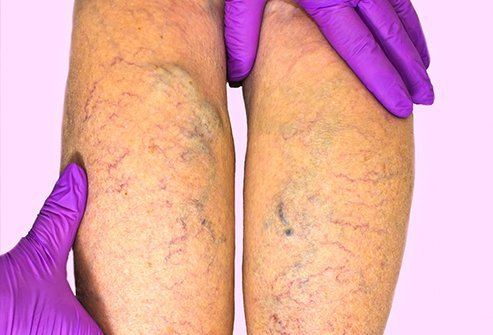The vasculature of the human body is mainly composed of two components, arteries and veins. Arteries carry oxygenated blood from the heart to the body, and veins carry deoxygenated blood from the body to the heart.
When the venous return of the body is insufficient (due to veins being unable to carry blood back to the heart) is known as venous insufficiency. The blood that cannot go to the heart gets collected in the lower extremities in this condition. This condition is called varicose veins.
Chronic venous insufficiency in Rockledge is a common condition. People generally neglect this condition at early stages, but they look for medical assistance when the symptoms become adverse.
Causes of chronic venous insufficiency:
- Thrombus is the most common cause of venous insufficiency.
- Veins of the lower extremities have valves, and these valves prevent the backflow of blood. If these valves aren’t functioning perfectly, the blood does not flow back to the heart and gets accumulated. Such conditions in which the valves of the veins are absent or abnormal lead to varicose veins.
- Veins are also surrounded by smooth muscles, and these smooth muscles push the blood towards the heart. The weakness of these muscles also leads to the accumulation of blood.
- Some patients develop this condition due to hereditary reasons, i.e., their family has a history of chronic venous insufficiency.
- Old-aged patients also develop chronic venous insufficiency due to various undescribed reasons.
- Pregnant women have also been reported to have venous insufficiency.
- Obesity – when the abdominal fat is too high, it causes the veins in the abdomen and pelvic to pressurize and get compressed.
- A smoker is at high risk of chronic venous insufficiency as the components of cigarettes(tar & carbon monoxide) have harmful effects on the venous system.
Treatments:
Treatment for chronic venous insufficiency depends upon the cause of the condition. Doctors diagnose the cause and provide the treatment accordingly.
Some of the non-invasive methods of treatment include:
- Certain medications have been shown to improve blood flow and prevent blood clots.
- Damaged veins are destroyed in a process known as Ablation.
- Sclerotherapy is a procedure in ethics blood from affected veins is redirected to healthier veins.
- Phlebectomy – With the help of small punctures, the varicose veins are removed.
Surgical methods to treat chronic venous insufficiency include:
- Repairing the valves of veins surgically or if the damage is too severe and the repair is not possible, the surgeon removes the veins.
- Vein bypass – in this process, the damaged vein is replaced with a healthy vein; usually, the vein is withdrawn from the feet.
- Endoscopic surgery is a minimally invasive procedure involving inserting a thin tube along a camera to clear the varicose veins.
